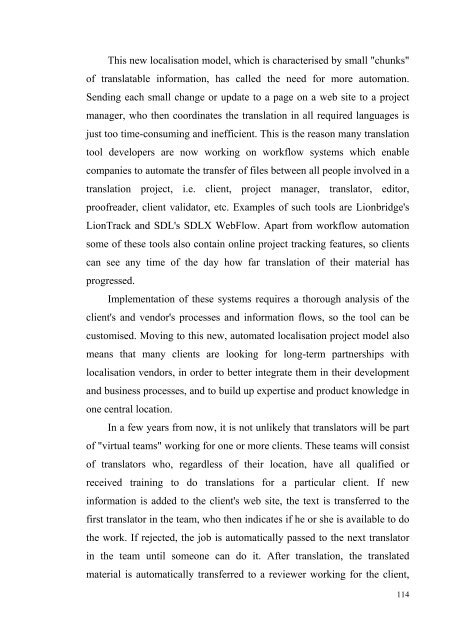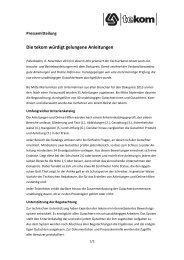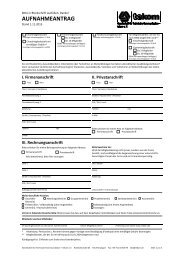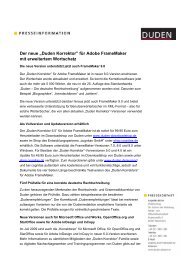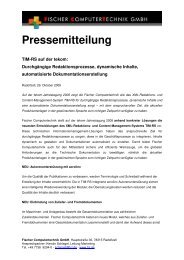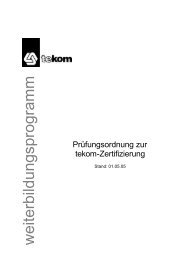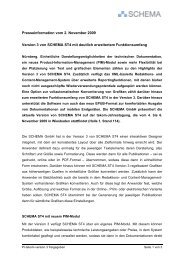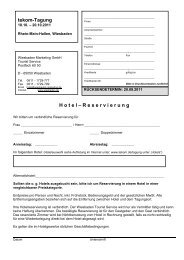qui - Tekom
qui - Tekom
qui - Tekom
Create successful ePaper yourself
Turn your PDF publications into a flip-book with our unique Google optimized e-Paper software.
This new localisation model, which is characterised by small "chunks"<br />
of translatable information, has called the need for more automation.<br />
Sending each small change or update to a page on a web site to a project<br />
manager, who then coordinates the translation in all re<strong>qui</strong>red languages is<br />
just too time-consuming and inefficient. This is the reason many translation<br />
tool developers are now working on workflow systems which enable<br />
companies to automate the transfer of files between all people involved in a<br />
translation project, i.e. client, project manager, translator, editor,<br />
proofreader, client validator, etc. Examples of such tools are Lionbridge's<br />
LionTrack and SDL's SDLX WebFlow. Apart from workflow automation<br />
some of these tools also contain online project tracking features, so clients<br />
can see any time of the day how far translation of their material has<br />
progressed.<br />
Implementation of these systems re<strong>qui</strong>res a thorough analysis of the<br />
client's and vendor's processes and information flows, so the tool can be<br />
customised. Moving to this new, automated localisation project model also<br />
means that many clients are looking for long-term partnerships with<br />
localisation vendors, in order to better integrate them in their development<br />
and business processes, and to build up expertise and product knowledge in<br />
one central location.<br />
In a few years from now, it is not unlikely that translators will be part<br />
of "virtual teams" working for one or more clients. These teams will consist<br />
of translators who, regardless of their location, have all qualified or<br />
received training to do translations for a particular client. If new<br />
information is added to the client's web site, the text is transferred to the<br />
first translator in the team, who then indicates if he or she is available to do<br />
the work. If rejected, the job is automatically passed to the next translator<br />
in the team until someone can do it. After translation, the translated<br />
material is automatically transferred to a reviewer working for the client,<br />
114


